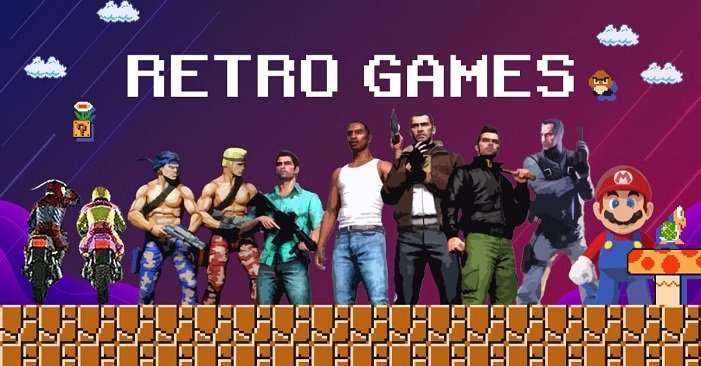Video gaming has come a long way since its humble beginnings. It owes much of its present culture and success to the roots of retro games. These classic video games from the past have left an indelible mark on the modern gaming landscape.
This article will delve into the profound impact of these games on modern gaming culture, exploring how these vintage gems continue to shape the industry, influence game design, and ignite nostalgia among gamers of all ages.
Preservation of Gaming History
These games serve as a crucial archive of gaming history. They remind us of the pioneering days of video gaming when pixelated graphics and simple gameplay were the norm. By preserving and celebrating these classic titles, modern gaming culture pays homage to its roots and acknowledges the innovations that paved the way for today’s advanced technology and gameplay experiences.
Nostalgia as a Driving Force
Nostalgia is a powerful force in the world of gaming. Many gamers who grew up playing these games have a deep emotional connection to these titles. The resurgence of interest in these games has led to a market for remakes, remasters, and retro-inspired games that capture the essence of classic gameplay while incorporating modern technology and graphics.
Influences on Game Design
Modern game designers often draw inspiration from these games. The simplicity and elegance of classic titles have influenced game mechanics, level design, and storytelling in contemporary games. Concepts like side-scrolling, 2D platformers, and pixel art aesthetics continue to find their way into new games, paying homage to the classics.
Accessibility and Emulation
The availability of emulators and digital marketplaces has made these games accessible to a new generation of gamers. Emulators allow players to experience classic games on modern hardware, preserving their legacy and introducing them to younger audiences. This accessibility has led to a resurgence in interest in retro gaming culture.
Competitive and Speedrunning Communities
these games have spawned dedicated communities of competitive gamers and speedrunners. Various games have become staples in competitive gaming circuits. Speedrunning, the art of completing games as quickly as possible, has gained immense popularity, with retro titles among the most frequently used speedrun games.
Revival of Retro Consoles
Releasing retro consoles has allowed gamers to relive their favourite titles on official hardware, complete with original controllers. These products tap into the nostalgia market and have been met with tremendous enthusiasm from long-time gamers and newcomers.
Cult Classics and Hidden Gems
The retro gaming scene is full of cult classics and hidden gems that may not have received mainstream recognition during their initial release but have garnered devoted fan bases over the years. These games are celebrated for their unique gameplay, storytelling, and charm. Modern gaming culture often celebrates and reimagines these titles, breathing new life into cherished classics.
Gaming Collectibles and Memorabilia
The enduring popularity of these games has given rise to a thriving market for gaming collectibles and memorabilia. Vintage game cartridges, consoles, and merchandise have become sought-after items among collectors. This interest has expanded to include retro-themed clothing, posters, and accessories, further fueling the nostalgia-driven gaming culture.
Conclusion
Retro games have not merely faded into the annals of history; they continue to thrive in the modern gaming culture. These games have also fostered competitive communities, led to the revival of classic consoles, and highlighted the enduring appeal of cult classics and hidden gems. As modern gamers continue to explore the rich heritage of retro gaming, these classic titles will remain an integral part of gaming culture, bridging the past and the present in a timeless celebration of interactive entertainment.

